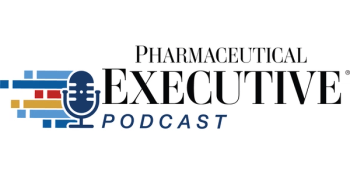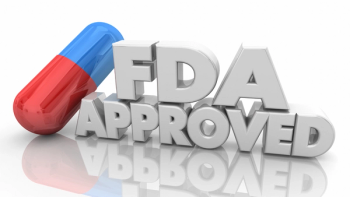Topline Findings
- Orforglipron delivers strong weight loss results: Lilly’s oral GLP-1 candidate achieved up to 12.4% average weight reduction in non-diabetic patients with obesity, but fell short of results with Wegovy, causing Lilly’s share price to fall while Novo Nordisk’s stock increased 7%.
- Oral alternative to injectables gains traction: Once-daily dosing with no food or water restrictions could reshape obesity treatment accessibility and adherence.
- Gastrointestinal adverse effects consistent with GLP-1 class: Nausea, diarrhea, and constipation were the most common but generally mild to moderate.
Results from the Phase III ATTAIN-1 trial (NCT05869903) showed that Eli Lilly’s orforglipron, an oral GLP-1 receptor agonist, demonstrated significant weight loss in patients with obesity or overweight. According to the company, all three doses met their primary endpoints compared to placebo after 72 weeks of treatment, delivering clinically meaningful weight loss as an adjunct to a healthy diet and physical activity.1
Can Orforglipron Redefine Obesity Treatment with Once-Daily Oral Dosing?
"Obesity is one of the most pressing global health challenges of our time, driving global chronic disease burden and impacting more than one billion people worldwide," said Kenneth Custer, PhD, EVP, president, Lilly Cardiometabolic Health, in a press release. "With orforglipron, we're working to transform obesity care by introducing a potential once-daily oral therapy that could support early intervention and long-term disease management, while offering a convenient alternative to injectable treatments.”
ATTAIN-1 Trial Design and Patient Population
- The 72-week, randomized, double-blind, placebo-controlled ATTAIN-1 trial compared the efficacy and safety of orforglipron 6 mg, 12 mg, and 36 mg as monotherapy to placebo in 3,127 adults with obesity or overweight with at least one of the following comorbidities: hypertension, dyslipidemia, obstructive sleep apnea, or cardiovascular disease, who did not have diabetes.
- Patients were randomly assigned in a 3:3:3:4 ratio to receive either one of the three doses or placebo.
- The primary endpoint of the trial was to demonstrate that orforglipron was superior to placebo in body weight reduction from baseline after 72 weeks.
Key Efficacy and Safety Findings
- Results showed that the 36 mg dose demonstrated an average weight reduction of 12.4% compared to 0.9% in the placebo group.
- Additionally, 59.6% of participants on 36 mg achieved at least 10% weight loss, and 39.6% achieved at least 15%, versus 8.6% and 3.6%, respectively, with placebo.
- Lower doses of 12 mg and 6 mg also yielded weight reductions of 9.3% and 7.8%, respectively.
- In a pre-specified exploratory analysis, orforglipron at 36 mg also reduced high-sensitivity C-reactive protein by 47.7%.
- Pooled data showed reductions in non-high density lipoprotein cholesterol, triglycerides, and systolic blood pressure across all doses.
- The safety profile of orforglipron was consistent in the ATTAIN-1 trial was consistent with that of the GLP-1 receptor agonist class, with gastrointestinal adverse events being the most frequently reported AE.
- The most common AEs across all three doses included nausea, constipation, diarrhea, vomiting, and dyspepsia
- Discontinuations due to AEs were reported in 5.1% of patients in the 6 mg arm, 7.7% in the 12 mg arm, and 10.3% in the 36 mg arm compared to 2.6% in the placebo arm.
- No hepatic safety concerns were identified.1
Market Reaction and Next Steps
Despite the success of the trial, results fell short of Wall Street expectations. Shares of Novo Nordisk, Lilly’s main competitor in the GLP-1 market, rose by 7% today. Lilly’s shares were down by 14% at the time of this report.
Prior to the data readout, it was predicted that orforglipron would become a major competitor to the treatments Novo Nordisk currently has on the market, according to a report by Reuters.2
Detailed ATTAIN-1 results will be presented at the European Association for the Study of Diabetes Annual Meeting 2025 and published in a peer-reviewed journal, with additional data from the ATTAIN and ACHIEVE Phase III programs expected later this year.1
“With these positive data in hand, we are now planning to submit orforglipron for regulatory review by year-end and are prepared for a global launch to address this urgent public health need,” concluded Custer, in the press release.
References
- Lilly's oral GLP-1, orforglipron, delivers weight loss of up to an average of 27.3 lbs in first of two pivotal Phase 3 trials in adults with obesity. Lilly. August 7, 2025. Accessed August 7, 2025. https://investor.lilly.com/news-releases/news-release-details/lillys-oral-glp-1-orforglipron-delivers-weight-loss-average-273
- Danish drugmakers jump as Eli Lilly's weight-loss pill data disappoints. Reuters. Accessed August 7, 2025. https://www.reuters.com/business/healthcare-pharmaceuticals/danish-drugmakers-jump-eli-lillys-weight-loss-pill-data-disappoints-2025-08-07/





